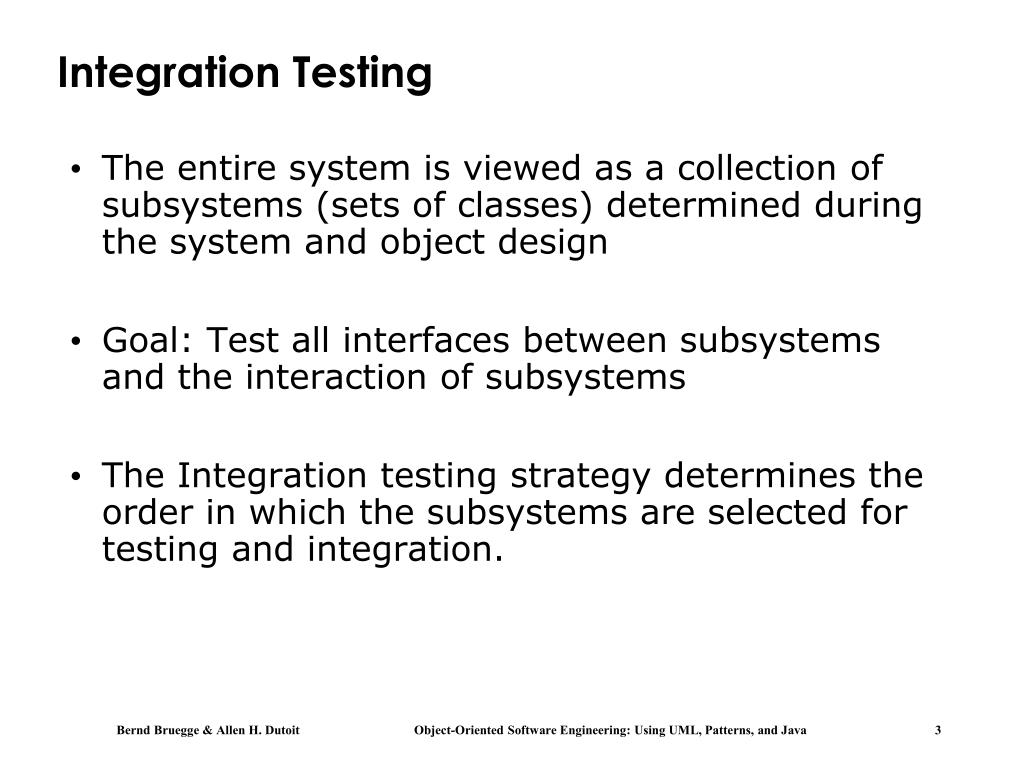Introduction
System Integration Assessment (SIT) is actually a essential phase in application development that guarantees different aspects of some sort of system work together as intended. Within the context regarding Artificial Intelligence (AI) systems, SIT postures unique challenges thanks to the complexness, dynamism, and natural uncertainties associated together with AI technologies. This specific article explores the most popular challenges faced during SIT for AI systems and offers strategies to overcome them.
1. Intricacy of AI Devices
Challenge: AI systems often consist associated with multiple interconnected elements, including data sewerlines, machine learning designs, APIs, and consumer interfaces. Each element might have its individual set of requirements and behaviors, rendering it challenging to assure seamless integration.
Option: To manage this complexness, adopt a modular method of testing. Break down the AI system into small, manageable components in addition to test each one separately before integrating all of them. Use integration assessment frameworks and tools that support component-based testing, allowing for even more granular control in addition to easier identification associated with integration issues.
two. Dynamic Nature involving AI Versions
Challenge: AI models, specially those based in machine learning, may change after some time since they are up to date with new files or retrained to be able to improve performance. These kinds of changes can impact how the model interacts with other components associated with the program, leading to be able to integration issues.
Solution: Implement continuous the usage and deployment (CI/CD) practices tailored with regard to AI systems. This kind of involves automating the testing of AI designs whenever changes are created. Use version manage for models and ensure that each edition is tested within the context regarding the entire program before deployment. Moreover, establish robust checking and rollback mechanisms to quickly tackle any issues that arise post-deployment.
a few. Data Integration and even Uniformity
Challenge: AJE systems rely greatly on data, plus inconsistencies or mistakes in data may lead to wrong outputs or technique failures. Ensuring that will data flows effectively throughout the system and even that data formats are consistent is a significant problem.
directory : Develop complete data validation and even integrity checks included in the SIT process. Implement automated data screening tools to validate the quality plus consistency of info at each period of the pipeline. Additionally, create a data governance framework that includes very clear guidelines for data management and incorporation.
4. Unpredictable AI Behavior
Challenge: AI systems, particularly these using complex algorithms or deep understanding models, can show unpredictable or non-deterministic behavior. This unpredictability makes it difficult to anticipate exactly how the system may behave under various integration scenarios.
Solution: Conduct exploratory assessment and use ruse tools to create a a comprehensive portfolio of scenarios and edge instances. Incorporate techniques just like adversarial testing, wherever the system is usually deliberately exposed to challenging or sudden inputs, to discover possible issues. Additionally, employ techniques such as type explainability and interpretability to better realize and predict AJE behavior.
5. Scalability Issues
Challenge: AI systems often should scale to take care of large volumes regarding data or large numbers of consumers. Ensuring that the integrated system can easily scale effectively when maintaining performance in addition to reliability can be a main challenge.
Solution: Contain scalability testing since part of typically the SIT process. Employ performance testing tools to simulate different loads and assess the system’s reaction. Evaluate the system’s performance under distinct scaling scenarios in addition to identify potential bottlenecks. Implement load controlling and optimization tactics to make sure that typically the system can manage increased demands proficiently.
6. Security and even Privacy Concerns
Obstacle: AI systems may process sensitive or perhaps personal data, elevating concerns about protection and privacy. The usage testing must make sure that security measures are in spot and that the particular system complies along with relevant regulations and standards.
Solution: Include security and privateness testing in to the TAKE A SEAT process. Conduct complete security assessments, which includes vulnerability scanning and even penetration testing. Apply privacy-preserving techniques this sort of as data anonymization and encryption. Make sure that the system adheres to regulatory specifications and best methods for data protection.
7. Interoperability along with Legacy Devices
Concern: AI systems may possibly need to socialize with existing legacy systems, that may have got different architectures, methods, and data platforms. Ensuring seamless interoperability can be demanding.
Solution: Develop plus test integration factors involving the AI system and legacy techniques thoroughly. Use middleware or API gateways to facilitate interaction between disparate techniques. Implement data modification and mapping techniques to bridge variations in data platforms and protocols. Make certain that legacy systems are compatible with the new AI components by way of extensive integration assessment.
8. Human Factors and Usability
Problem: The integration of AJE systems into user-facing applications may impact usability and require adjustments to user interfaces and connections. Ensuring that the built-in system meets end user needs and objectives is important.
Solution: Include user acceptance screening (UAT) into the SIT process. Engage end-users early inside the testing procedure to gather feedback on usability in addition to functionality. Conduct functionality studies and user experience testing in order to ensure that the integrated system is intuitive and satisfies user requirements. Help to make iterative improvements dependent on user suggestions to enhance the overall user experience.
Bottom line
System Integration Tests for AI techniques presents unique problems due to their complexity, dynamic character, and reliance about data. However, by simply adopting a structured technique to testing, applying best practices intended for data management, plus incorporating continuous the usage and monitoring, businesses can effectively deal with these challenges. Because AI technologies carry on to evolve, keeping adaptable and positive in testing strategies will be key to ensuring successful integration and delivering trustworthy, high-quality AI systems.